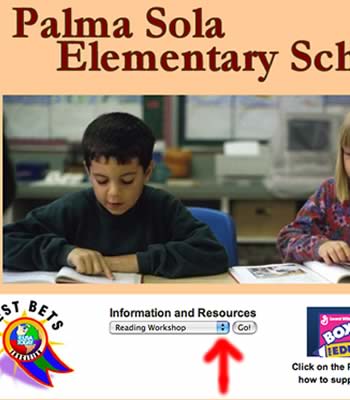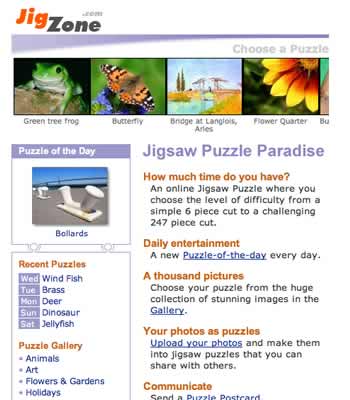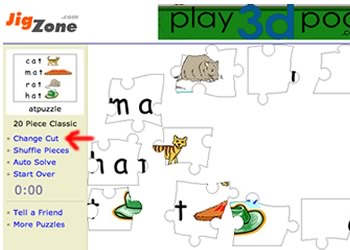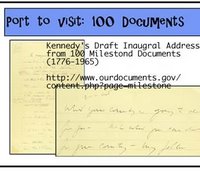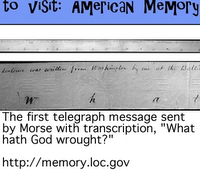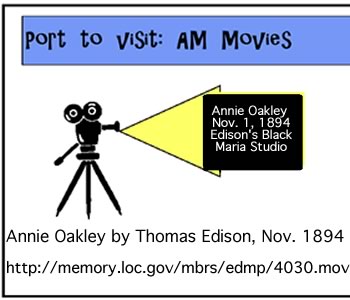Great Educational Sites (K-3):
 Starfall is primarily designed for first grade, but can be used for pre-kindergarten, kindergarten and second grade. It has a major focus on letter/sound recognition, and first grade phonics skills. The format is fun for your students and they can print out a worksheet for more practice with the skill they worked on.
Starfall is primarily designed for first grade, but can be used for pre-kindergarten, kindergarten and second grade. It has a major focus on letter/sound recognition, and first grade phonics skills. The format is fun for your students and they can print out a worksheet for more practice with the skill they worked on.  Little Fingers is a on-line software company, meaning none of their software is on CD, you have to purchase and download it. They have all kinds of language arts and math games for elementary students. They also have free online games for preschool through 4th grade.
Little Fingers is a on-line software company, meaning none of their software is on CD, you have to purchase and download it. They have all kinds of language arts and math games for elementary students. They also have free online games for preschool through 4th grade. The National Library of Virtual Manipulatives (NLVM) is an NSF supported project that began in 1999 to develop a library of uniquely interactive, web-based virtual manipulatives or concept tutorials, mostly in the form of Java applets, (like you care about that) for mathematics instruction (Pre-K-12th grade). It's a free online source and has a free download trial desktop version. You can also click on links to have a Spanish version or French version.
The National Library of Virtual Manipulatives (NLVM) is an NSF supported project that began in 1999 to develop a library of uniquely interactive, web-based virtual manipulatives or concept tutorials, mostly in the form of Java applets, (like you care about that) for mathematics instruction (Pre-K-12th grade). It's a free online source and has a free download trial desktop version. You can also click on links to have a Spanish version or French version. Story Place is a site with games and read alouds organized by themes. Click on other themes to see the long list of titles. This site is easily navigated by your students.
Story Place is a site with games and read alouds organized by themes. Click on other themes to see the long list of titles. This site is easily navigated by your students. Count Us In has 15 Math games for little ones covering counting to measuring and everything in between. Each game is designed to help children understand basic concepts in mathematics. All of these games require the Flash 5 Player or higher to work online.
Count Us In has 15 Math games for little ones covering counting to measuring and everything in between. Each game is designed to help children understand basic concepts in mathematics. All of these games require the Flash 5 Player or higher to work online. Gamequarium is a site with lots of links to games for all subjects and the links are lots of fun for your studens (and they're learning, too)! It's organized by K-2 to 3-5. It links to lots of other sites, mostly all good.
Gamequarium is a site with lots of links to games for all subjects and the links are lots of fun for your studens (and they're learning, too)! It's organized by K-2 to 3-5. It links to lots of other sites, mostly all good. Storyline on-line is a free online video streaming program featuring members of the Screen Actors Guild reading stories aloud. They talk about the stories and how children can get the book. It also has printable activities that go along with the stories.
Storyline on-line is a free online video streaming program featuring members of the Screen Actors Guild reading stories aloud. They talk about the stories and how children can get the book. It also has printable activities that go along with the stories. Fun Brain is a site first graders love. It's engaging and they like to navigate on their own.
Fun Brain is a site first graders love. It's engaging and they like to navigate on their own. PBS Kids- Between the Lions has great short videos on phonics rules and letter sounds. The PBS site has lots of pages with their TV characters themes. There's lots of printable activities as well.
PBS Kids- Between the Lions has great short videos on phonics rules and letter sounds. The PBS site has lots of pages with their TV characters themes. There's lots of printable activities as well.  Computer Centers This is a teacher created managed site, that has links for students to work on the current skill in the first grade N-MUSD pacing plan. It's updated for each Houghton Mifflin reading theme and is easily navigated by students while directing them to a limited area of links. It links to a kinder centers page and a second grade page.
Computer Centers This is a teacher created managed site, that has links for students to work on the current skill in the first grade N-MUSD pacing plan. It's updated for each Houghton Mifflin reading theme and is easily navigated by students while directing them to a limited area of links. It links to a kinder centers page and a second grade page. HMTech Wikispaces is a site designed for those teachers that think teaching Houghton Mifflin is too all consuming to have time to integrate technology or teachers that feel their classrooms have been conquered by the worksheet. We hope to change your mind and give you hope. This site has been made by teachers that use technology daily to motivate and engage students in authentic learning, differentiate instruction, integrate many standards into one lesson and like to have FUN!:) It IS a work in progress. Please, please add ideas!
HMTech Wikispaces is a site designed for those teachers that think teaching Houghton Mifflin is too all consuming to have time to integrate technology or teachers that feel their classrooms have been conquered by the worksheet. We hope to change your mind and give you hope. This site has been made by teachers that use technology daily to motivate and engage students in authentic learning, differentiate instruction, integrate many standards into one lesson and like to have FUN!:) It IS a work in progress. Please, please add ideas!  Brainormous created by Aaron Turner, a flash script writer, is a web site with games for learning number facts. It focuses on third grade multiplication skills, using a solar system theme. Students go on missions to objects in the solar system and to get their fuel for each trip they need to do math facts. The faster and more correct they are they get more fuel. It also has addition and subtraction games that can be used at lower grades and of course for higher grade students who haven't mastered their addition, subtraction or multiplication facts. You can play free on line or download the software at a very low price. If you can it's always good to pay the creator for his/her time and effort to create these cool things for our students to use.
Brainormous created by Aaron Turner, a flash script writer, is a web site with games for learning number facts. It focuses on third grade multiplication skills, using a solar system theme. Students go on missions to objects in the solar system and to get their fuel for each trip they need to do math facts. The faster and more correct they are they get more fuel. It also has addition and subtraction games that can be used at lower grades and of course for higher grade students who haven't mastered their addition, subtraction or multiplication facts. You can play free on line or download the software at a very low price. If you can it's always good to pay the creator for his/her time and effort to create these cool things for our students to use. BrainPop is a library of short videos on everything from the Underground Railroad to the atomic model to Shakespeare. It has Interactive quizzes for assessment and enrichment materials like experiments and creative activities ideas to supplement the movies. Topics are aligned with state and national education standards and searchable by state standards. They're also by
BrainPop is a library of short videos on everything from the Underground Railroad to the atomic model to Shakespeare. It has Interactive quizzes for assessment and enrichment materials like experiments and creative activities ideas to supplement the movies. Topics are aligned with state and national education standards and searchable by state standards. They're also by  subject area; Science, Math, English, Social Studies, Health, Technology and Arts and Music. Right now the library consists of more than 600 movies for grades 3-12 and they are constantly expanding. All the videos are closed-captioned. Many are also available in Spanish at es.brainpop.com. The videos are hosted by an orange robot named Moby and his bubby Tim.
subject area; Science, Math, English, Social Studies, Health, Technology and Arts and Music. Right now the library consists of more than 600 movies for grades 3-12 and they are constantly expanding. All the videos are closed-captioned. Many are also available in Spanish at es.brainpop.com. The videos are hosted by an orange robot named Moby and his bubby Tim.You can get a 30 day free trial with the access code PALM2008, but you have to activate it by March 21st.










